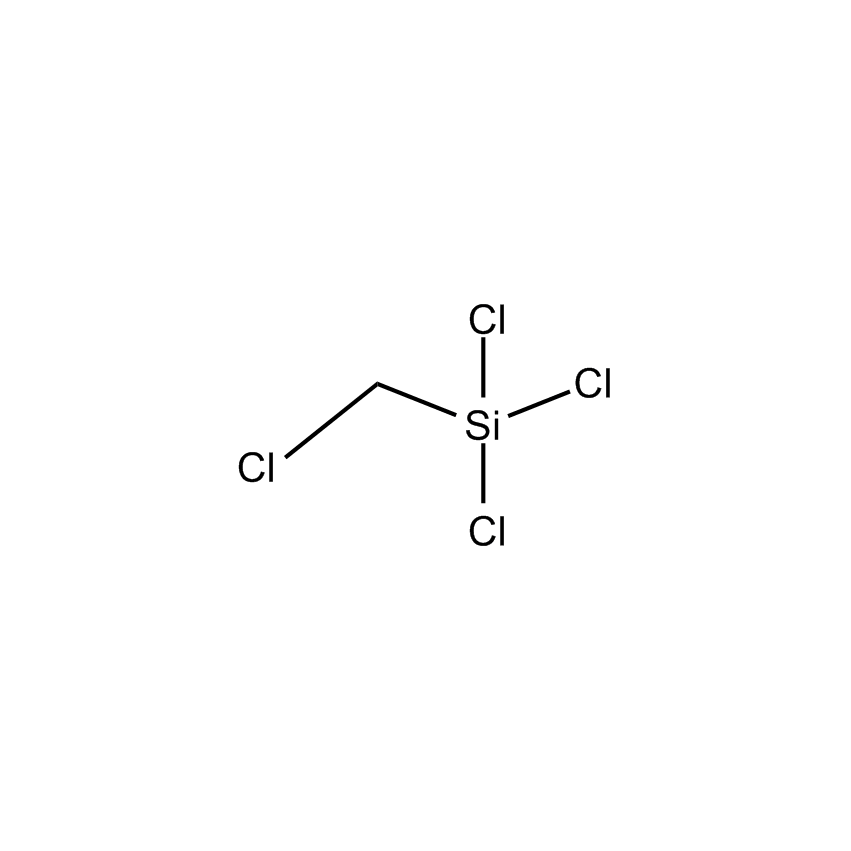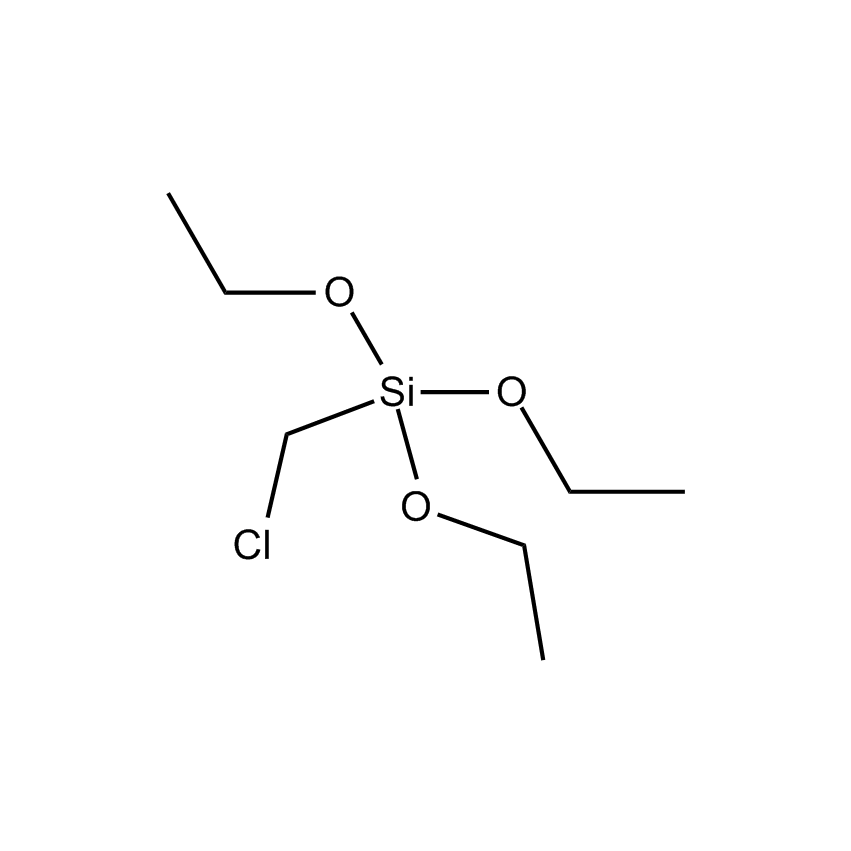Additional Properties
- Einecs Number 216-316-9
- HMIS 3-2-1-X
- Molecular Formula CH2Cl4Si
- Molecular Weight (g/mol) 183.92
- Purity (%) 97%
- TSCA Yes
- Delta H Vaporization (kJ/mol) 37.7 kcal/mole
- Autoignition Temp (˚C) 380
- Boiling Point (˚C/mmHg) 117-118
- Coefficient of Thermal Expansion (x10-4 K-1) 0.142, 27°
- Density (g/mL) 1.465
- Flash Point (˚C) 69 °C
- Refractive Index @ 20˚C 1.4535
- Additional Viscosity (cSt) '0.5, 20
- Viscosity at 25 ˚C (cSt) '0.5
Application
Building block for carbosilanes.1
Reference
1. Whitmarsh, C.; Interante, L. US Patent 5,153,295, 1992.
Safety
Halogen Functional Trichloro Silane
Silane coupling agents have the ability to form a durable bond between organic and inorganic materials to generate desired heterogeneous environments or to incorporate the bulk properties of different phases into a uniform composite structure. The general formula has two classes of functionality. The hydrolyzable group forms stable condensation products with siliceous surfaces and other oxides such as those of aluminum, zirconium, tin, titanium, and nickel. The organofunctional group alters the wetting or adhesion characteristics of the substrate, utilizes the substrate to catalyze chemical transformations at the heterogeneous interface, orders the interfacial region, or modifies its partition characteristics, and significantly effects the covalent bond between organic and inorganic materials.
(Trichlorosilyl)chloromethane; Chloromethyltrichlorosilane



